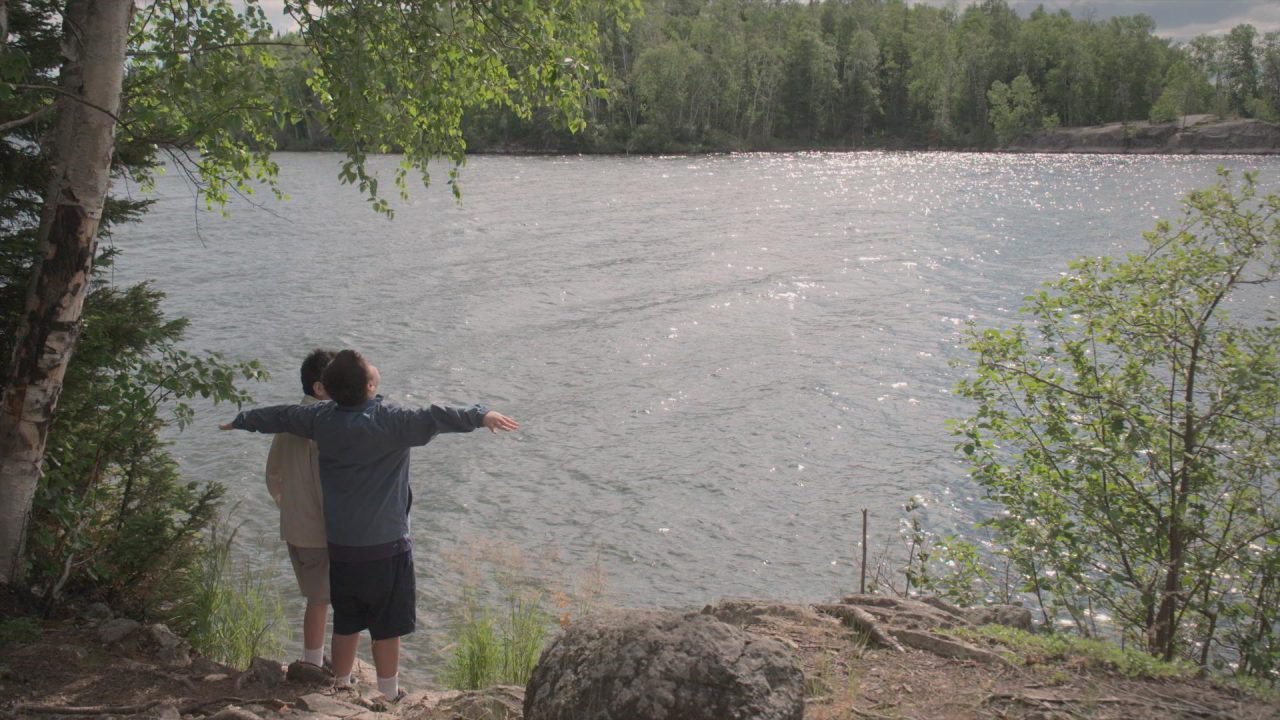
Stories Are in Our Bones: Q&A with filmmaker Janine Windolph
Stories Are in Our Bones: Q&A with filmmaker Janine Windolph
Filmmaker, educator and community worker Janine Windolph left her Cree community in La Ronge, Saskatchewan, as a child. For many years, she wasn’t sure if she would ever return to the land that held her family’s stories and memories.
However, the birth of her two sons led to a powerful desire to reconnect with her homeland and give the boys access to traditional knowledge, kinship and ways of life that are rooted in being on the land. In Stories Are in Our Bones, Janine and her mother, a residential school survivor, take the city-raised boys fishing—a healing process that offers teachings about themselves, their culture and their history.
Tell us about yourself and where you come from.
My paternal family is from La Ronge, Saskatchewan, where I was born and raised until I moved to the city when I was 11, and my mom, Marian Otter, left to follow her dreams to get a university education. My family background here is Woodland Cree, and many of my family still actively live off the land, which is at the heart of my film. Moving to the city shifted my identity in many ways that I only understood fully when I had children of my own. It was because of this that I made a point of returning them to the homeland that I once walked as a child, and the same land that my mom calls home.
I am a mother of two teenage sons, Dawlari and Corwyn. I also had a daughter named Heaven who passed away during pregnancy, and her story was featured in my first National Film Board documentary, called Life Givers: Honouring Our Elders and Children. Much of my personal work reflects on my family histories. The more I learn, the more diverse I realize my identity is.
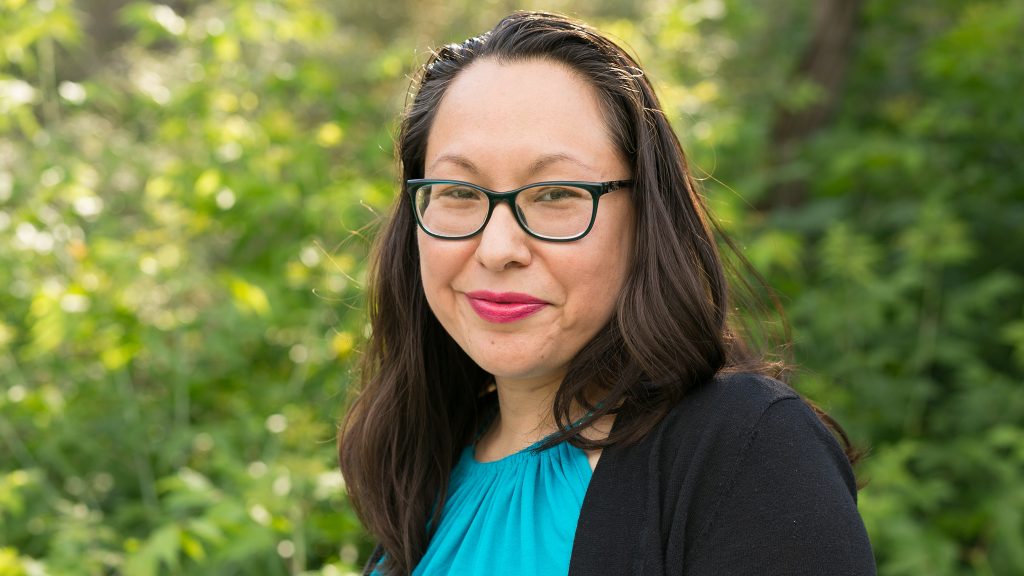
My maternal family ties are in Waswanipi, Quebec, where my Atikamekw grandmother, Caroline, is from. It was through her journey and my German grandfather, Heinz Windolph, that the family line came to live in La Ronge, Saskatchewan, and to set roots. Unfortunately, the reasons for my grandmother leaving her home community reflect a story of trauma as a missing Indigenous woman who later reconnected over 20 years later.
As part of my role as a mother, I teach my children that they are strong because they have such a diverse family history that changes as each generation moves across the land and interconnects with different cultures. My boys were born and raised in Regina, Saskatchewan, the land of Treaty Four, where we were adopted into the Plains Cree culture through my dad, Jhaik WindyHair, who took me in as a daughter when I was a teenager. It was in Regina that I followed my mom’s footsteps and went to the University of Regina, where I completed a Bachelor of Fine Arts in Media Production and an interdisciplinary Master of Fine Arts in Media Production and Indigenous Fine Arts.
My sons and I have continued the momentum West, and have moved to Banff, Alberta, where I now work as Associate Director of Indigenous Arts at the Banff Centre for Arts and Creativity. This was a personal dream we had of living in a national park and having an outdoor lifestyle while getting to know the Indigenous peoples of Treaty 7 and surrounding territories.
Your body of work includes films, academic publications and community work. What are the themes and connections that tie all this work together?
The main themes of most of my work are family, community and kinship. Storytelling in different mediums is key to furthering dialogue, to support healing through understanding and to highlight the value of kinship through family and community, and as people. Many of the films I have created are both personal and community stories where my family has been generous in sharing their stories with me and with outside audiences. My master’s project is called “More Questions Than Ancestors: The Windolph Family.” It explored the family legacy as it was impacted by residential school legacy and as a result of the impacts of trauma that reflect differently in each generation. The goal was not to complete the family narrative but to talk about personal stories and memory that can be reflected in Cree narrative storytelling. Each memory became a story bundle, a short documentary, that can be paired up with another one or presented in its totality. The other focus was on presentation; for example, when presentation of a film is complemented with talking circles, it can be a powerful way of encouraging dialogue and building relationships that goes beyond a single viewing to a large audience that may or may not be able to participate in the dialogue.
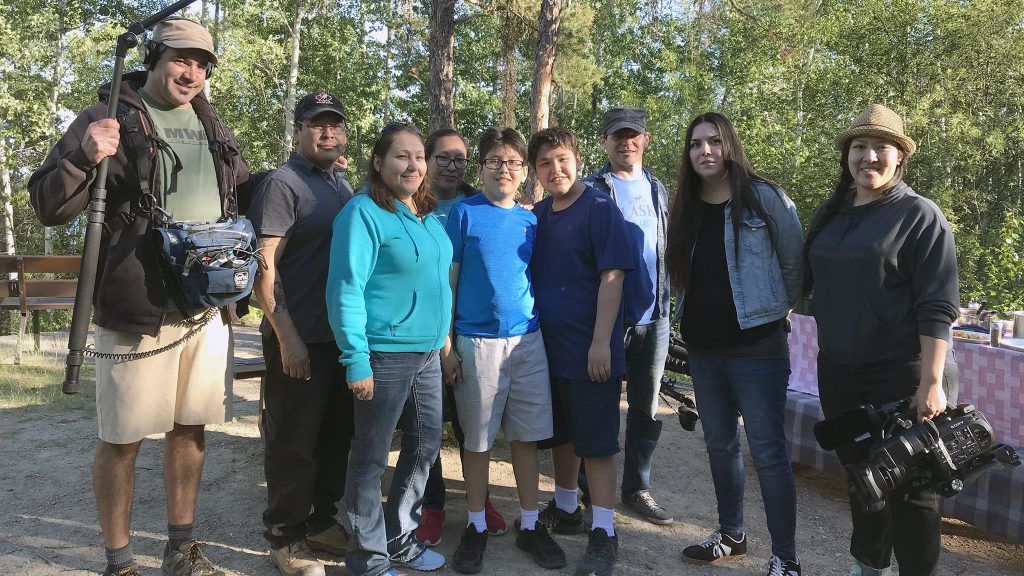
My interest in this project is a new area for me: exploring food sovereignty. It was a key part of my childhood and my community. As a child, I was used to having fresh fish, moose, muskrat and various foraged plants. When I moved to the city, my diet quickly shifted to processed food and I ate more beef, chicken and ham while slowly losing my connection to the foods of my childhood. In recent years, I became a vegetarian, as it became clear that processed food was impacting my health. It also made me realize that my sons were not getting the same food that our ancestors did, and this was key to connecting with our ancestors. Not only through the eating of it, but in the process of foraging, hunting and fishing.
As an adult, I learned more about the history of Indigenous peoples, and it became clear to me that the first wave of genocide was the destruction of food sources, such as the bison. Looking to the north, the land has been getting sick from mining and other forms of contamination, such as the recent Husky Oil spill in the North Saskatchewan River. This led to my concern that my sons would not get a chance to live and learn from the land through our food like I once did. I challenged my boys: if they would become providers, like their family before them, I would eat what they provided. This was followed by a request from Corwyn to take them on their first fishing trip. This in itself sparked the inspiration for this film.
You worked with the Truth and Reconciliation Commission, and your films have documented the true history of residential schools in Canada. What does the term reconciliation mean to you?
As a Statement Gatherer, I learned that reconciliation means many things to many different people, and for myself it meant to first reconcile the truths within myself, my family and my community in order to find ways to move forward on a larger healing journey. For me, participating was a way to help others share their truths, and to have that truth acknowledged. After years of listening to hundreds of statements, I realized that the work was just beginning, and it would take generations to undo the damage done by residential school legacy and colonial policies that impact Indigenous peoples in Canada.
The journey began with my own healing, by breaking the intergenerational cycles that were created out of the residential school legacy that were still active in my generation, and that I did not want to hand down to my sons. In the second phase, I focused on my family, starting a dialogue to help address the disruptions and fragmented relationships between generations that were a result of those destructive cycles. This was probably the hardest part of the process, as not all family members were aware of these cycles, and it was best done through storytelling and reflection through art and film.
The third phase was initiating and supporting dialogue within my community by sharing my own healing journey with others. The more important note for this step was to work with those who are willing to build relationships with each other while exploring and addressing the Truth and Reconciliation Commission Calls to Action. After I completed a film called RIIS From Amnesia with my late colleague Trudy Stewart, the community began to participate in the conversation and was key to the success of achieving municipal and provincial designation of the Regina Indian Industrial School Cemetery as a municipal heritage site.
The last step, and most difficult, is to change the policies that allow harm to the Earth for corporate gain of resources, and to empower the stewards of the land—the Indigenous peoples—to lead in its healing journey. I often tell my sons. That is why having the boys participate in this film was important. For them to see the role they have, they must return to the land and understand where their food comes from.
Why was it important to you to reconnect with the place that you come from after you had children?
When I changed how I looked at my past, I realized that my children would never know the place that shaped my upbringing, and wouldn’t know little Janine, who I was learning to love again. I really wanted them to see the land that I grew up on, my playground as a child. I wanted my sons to understand that while I experienced trauma from the intergenerational effects of the residential school legacy that left me disconnected from my hometown, my paternal family and my Woodland Cree cultural practices, the act of returning was an example of resilience and strength.
After acknowledging the hard truths about how my family and I had been impacted by the residential school legacy, I was able to look past the pain, shame, anger and hurt to see the beauty, the resilience and the strength of my family. Many of my family still live on the land, as stewards, to the best of their abilities within the current conceptions of land ownership. For my sons, I wanted them to learn from my mom and my family to forage, hunt and fish, but also to know of the role they could play when they are older in bettering the place we call home. Over the years, I have returned many times and worked on various film projects to help give voice and community presence to larger Indigenous and non-Indigenous audiences.
Why was it important for you to have your mother in this film?
My mother, Marian, is my matriarch who has been there not only for me but also for the community of Regina, and now La Ronge once again. She taught me to be strong, to adapt, to share and to love. Through her healing journey, she showed me strength and resilience. Over the years, my mom has shared her teachings openly with others and is an important carrier of my family stories and cultural traditions. She has returned to living off the land again, and she is happier living off the land than she had been living in the city—although she brought us to the city because she knew that education was our new way to survive. The key is balance and to never forget where you came from. This film was a way to honour her and the teachings she shares with my boys and with me. Further, as many families are fragmented and don’t often get to transmit their teachings to the younger generations, I wanted the film to reflect three generations of the family line and to capture a moment in time where these teachings are being shared. Lastly, I want my boys to know that she is their matriarch and to reinforce the Cree worldview that I was raised in and that was carried on by my grandmother Caroline.
What led you to the title Stories Are in Our Bones for this film?
Each time my mom would share a story that my grandmother told or one of her sayings, these teachings carried a special place in my heart. My grandmother passed away when I was a child, and I have very few memories of her. When one shares the sayings of the previous generation, they are known as the echoes of our ancestors and referred to as oral footnotes.
My mom always told me that my grandmother Caroline would say, “Stories are in our bones.” She said you can tell a lot about a person, when they pass, from the bones that are left behind. You can tell what they ate, where they got injured and even where they came from. This visual stuck with me, as many of the generations before me have now passed on, and are our ancestors. In some ways, researching my family history has been partly detective work, with what little clues get left behind.
Over the years, I learned that the memories of our ancestors are in our DNA and can be accessed, but we forgot how to do that. This made me realize that we are reflections of our ancestors, even if we have not always been handed down the stories—that somehow the knowledge is still inside us. I realized the more I connected to the land, the food and the cultural activities, the more connected I felt to my ancestors’ worldview. Fishing is one of the activities that all sides of my family lines have done and still do to this day. Even myself, I used to fish as a kid in La Ronge. So when my son Corwyn wanted to learn, it made me realize that this would be important for both sons to learn, and to film the process to be able to share the journey with others who are taking time to reconnect with their homeland, their culture and their ancestors.
Watch Stories Are in Our Bones:
Stories Are in Our Bones, Janine Windolph, provided by the National Film Board of Canada
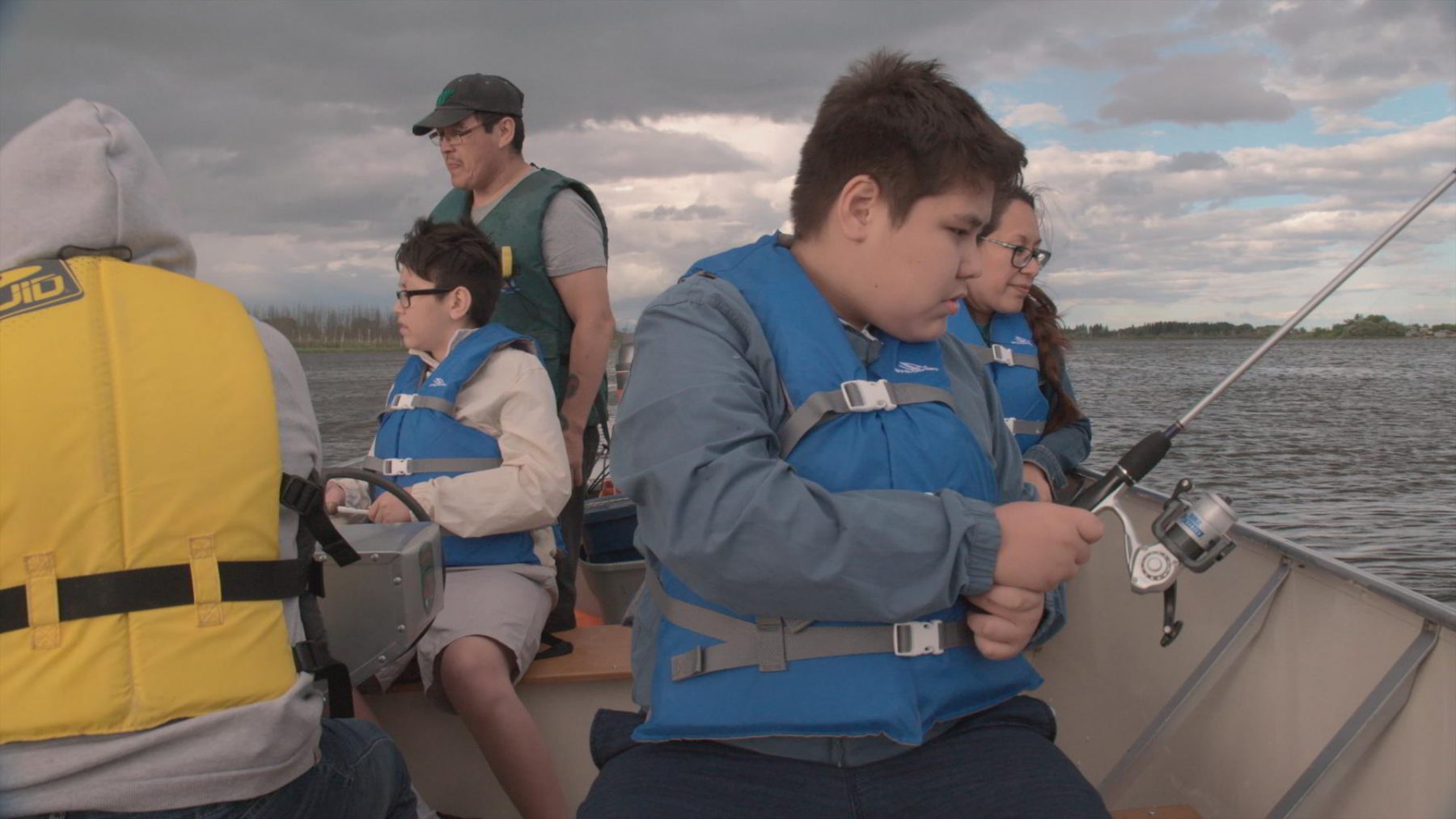
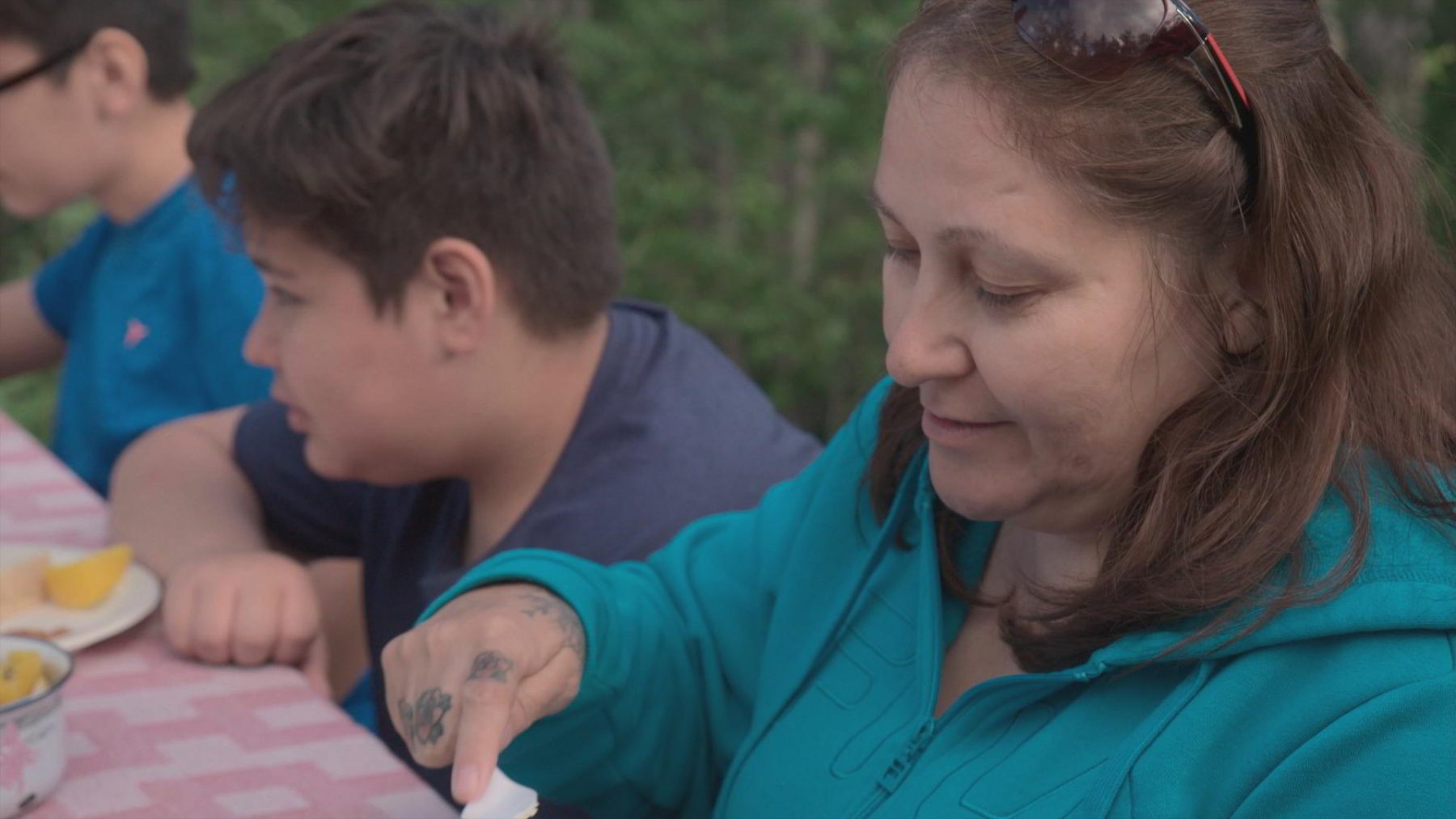
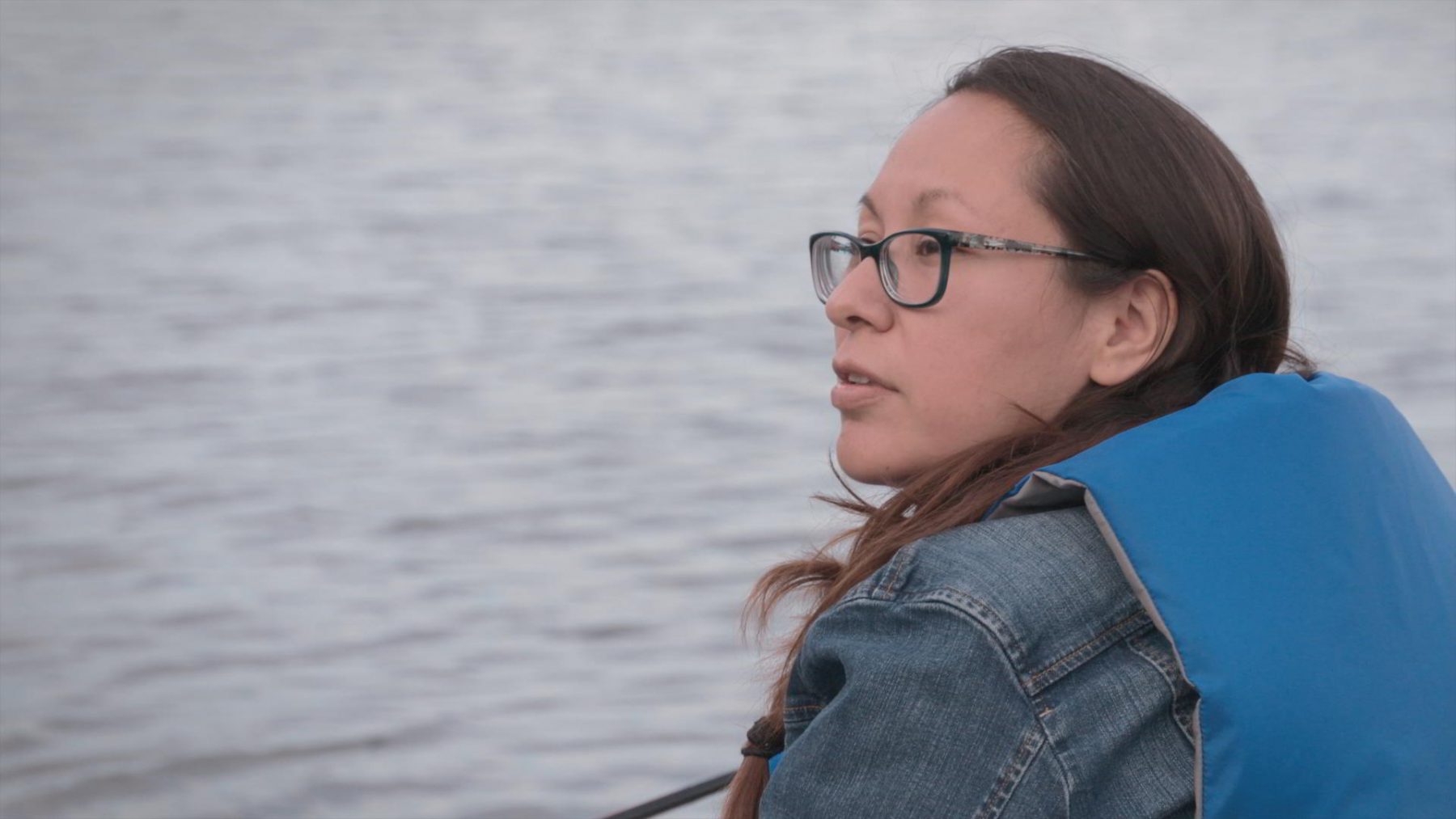




Thank you for a touching thought provoking story.
Brad Denis, Brisbane Australia (formerly, Calgary)